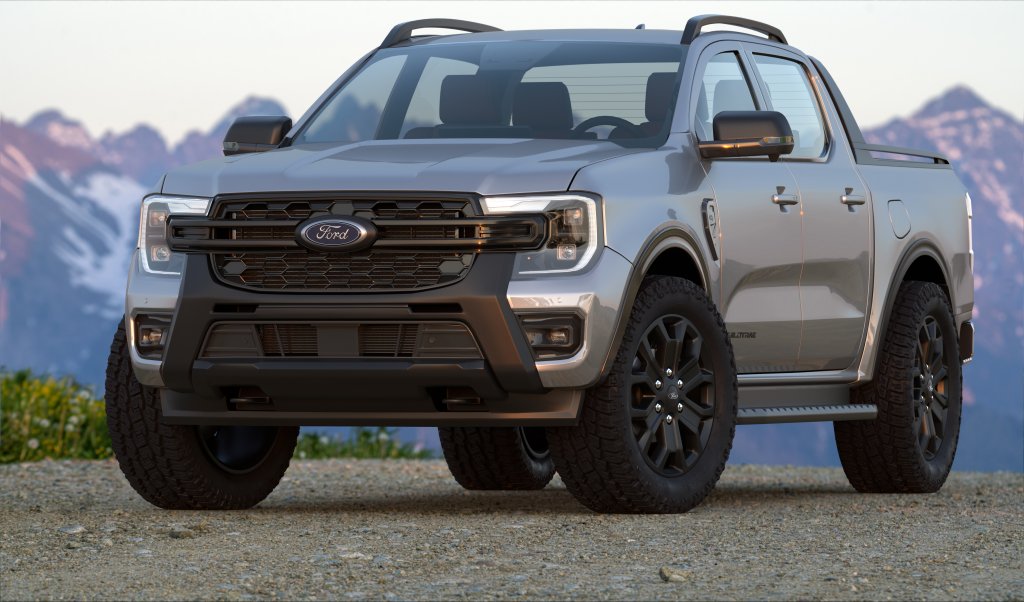The Ford Ranger first arrived in the United States as a compact pickup in 1983. It was discontinued in 2011 but was reintroduced in 2019 as a mid-size pickup. Since its reintroduction back in the States, Ford has sold more than 350,000 Ranger trucks. The 2020 and 2005 Ford Ranger have been among the most popular.
After looking closer at all of the data, we picked the best Ranger model years and the worst.
If you plan to buy a used Ford Ranger, you want this information to ensure you get a reliable truck for the best price. If you are already driving a Ranger, this data can help you determine if you should put any more money into your truck.
Our data comes from the thousands of FIXD car scanners installed in Ford Ranger trucks. It is combined with the survey results from Ranger owners, along with the published reports on KBB values, safety ratings, recalls, and fuel economy, so you have a clearer picture.
| Best Years | Why? | Worst Years | Why? |
| 2019-2021 |
Highest reliability ratings, minimal chance of expensive repairs, good fuel economy rating |
2009 |
Low-reliability scores, highest cost of ownership, increased chance of expensive engine and brake repairs |
| 2008 |
High ownership satisfaction, low cost of repairs and maintenance |
2004-2006 |
Elevated cost of ownership, low safety scores, high chance of expensive repair bills |
| 2010-2011 |
Decent owner satisfaction ratings, minimal chance or major mechanical problems |
2001-2002 |
Average owner satisfaction scores, increased likelihood of engine or transmission repair bills |
| 2003 |
High ratings from owners, average cost of ownership, low chance of engine or transmission issues |
2007 |
Average ownership satisfaction, slightly elevated risk of expensive mechanical repairs |
Ford Ranger Engine Reliability Score, Safety Ratings, MPG and Value v.s. Maintenance & Repair Costs – Year by Year
To help with your Ford Ranger shopping, we look at all of the information we have. Between our four charts, you will see which models are worth looking at. These charts help you review the reliability of each truck, fuel economy numbers, resale values, safety scores, and the average repair costs.
If you’re in the market for a car, take a look at our article on the USA’s most reliable and cheapest to repair cars in the U.S. Don’t get stuck with a lemon, use our data to help you shop.
Engine Reliability Score – Over The Years
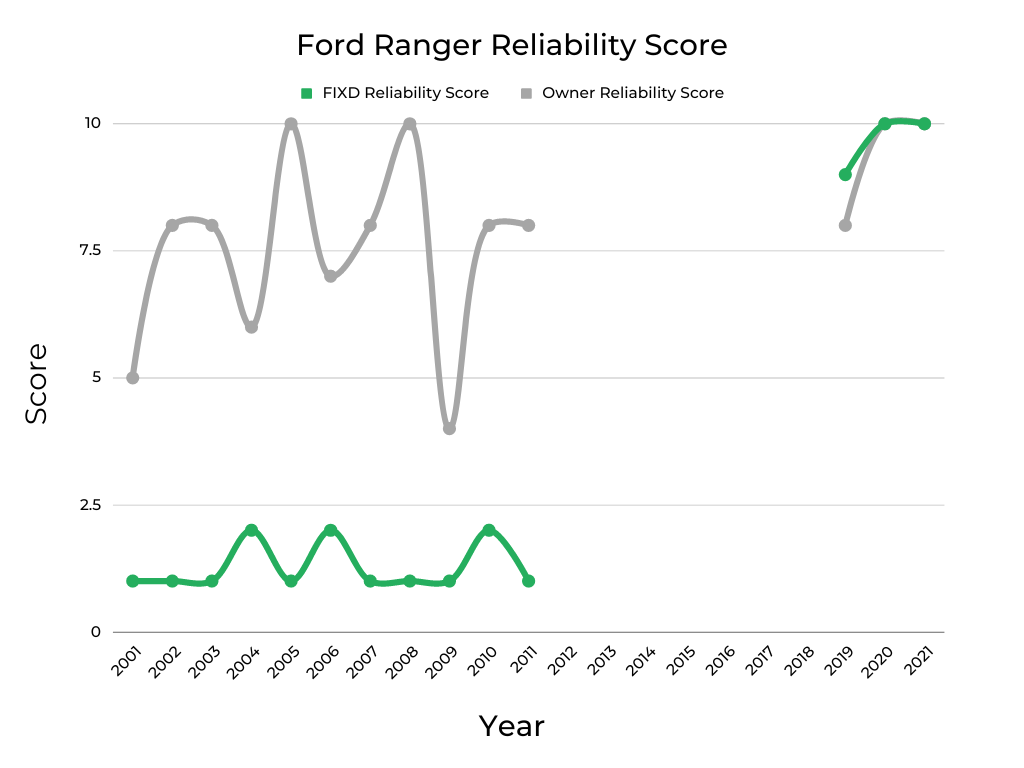
Our detailed chart shows you the average reliability of Ford Ranger trucks with two different scores to consider:
- The FIXD Reliability score (Green line) – data determined by how many check engine lights are thrown by Ford Ranger trucks during every 12,000 miles of driving (1 year’s worth of driving).
- The Owner Reliability score (Gray line) from Ford Ranger owners that were surveyed.
We use a scale of 1 to 10. At the lowest, the Ford Ranger model scores a 1, while the highest score is 10. With an average score, expect to see a 5.
While this chart has valuable information, it shouldn’t be the only factor in making a decision. There are patterns between these two lines, but the majority of the models show a pretty intense gap between the numbers. These differing scores happen because of two reasons, either the owners have intense loyalty that causes them to rank the truck too high, or there weren’t enough owners for the FIXD data to be completely accurate. Either way, you want to look at all of our data and charts before making an educated conclusion.
Clearly, the newer Ford Ranger trucks have the highest rankings overall. If you can afford to buy one of these trucks, you can expect a longer life than if you choose an older one.
If you are just starting in the truck-buying process, we suggest rethinking any that have scored low-reliability ratings. However, if you already have an idea of which Ranger you want, jump ahead to learn more about that particular model.
May we also recommend spending a minute to read about some common reasons for the Check Engine Lights on Ford Ranger trucks before you pick a favorite year?
NHTSA Safety Score – Over The Years
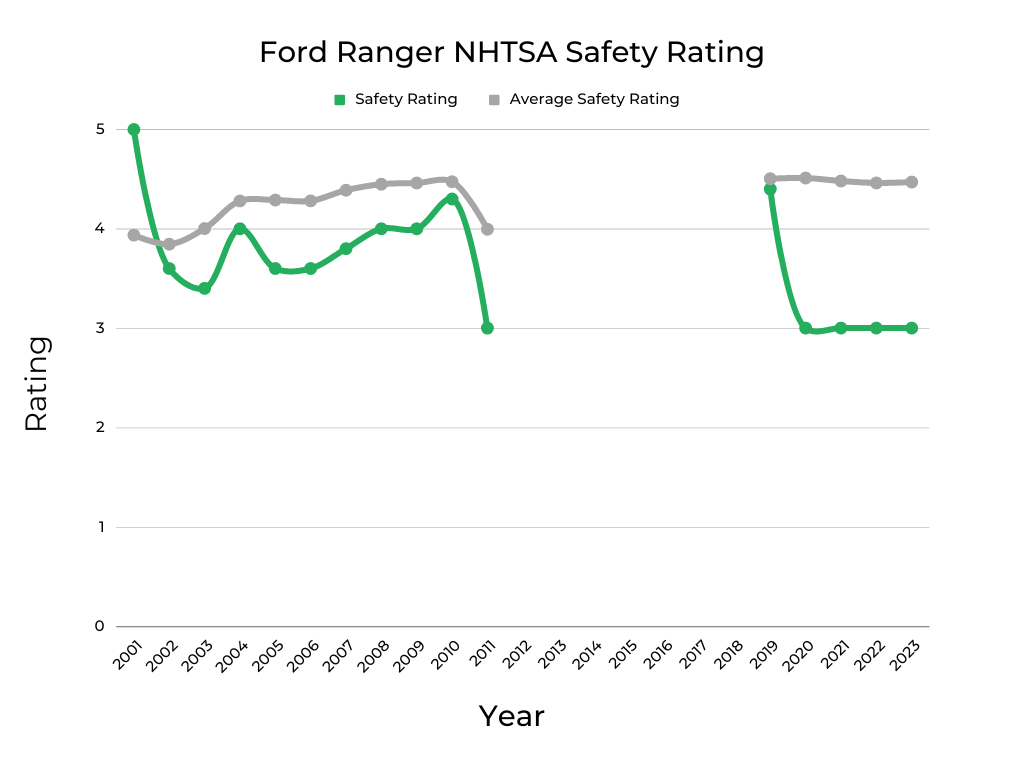
The National Highway Transportation Safety Administration (NHTSA) provides crash testing reports on most passenger vehicles. To make it easier to discern the data on Ford Ranger trucks, we put the information into this chart, making it easier to reference each model.
The green line reveals an average safety rating for every Ford Ranger model year. When you look at it compared to the gray line, you see how each truck rates compared to the average crash test safety rating found from all of the passenger vehicles we have the NHTSA data on.
Sadly, every model year except the 2001 Ford Ranger has fallen below the average. This isn’t good news for this Ford truck.
It’s easier to find cheap car insurance for your used truck when safety scores are higher.
If you live in one of the states listed below, we can show you the cheapest vehicles to insure in yours.
| What Used Cars Are the Cheapest To Insure In: |
| Ohio |
| North Carolina |
| Michigan |
| Georgia |
| Texas |
| New York |
| Illinois |
| Pennsylvania |
| California |
MPG – Over The Years
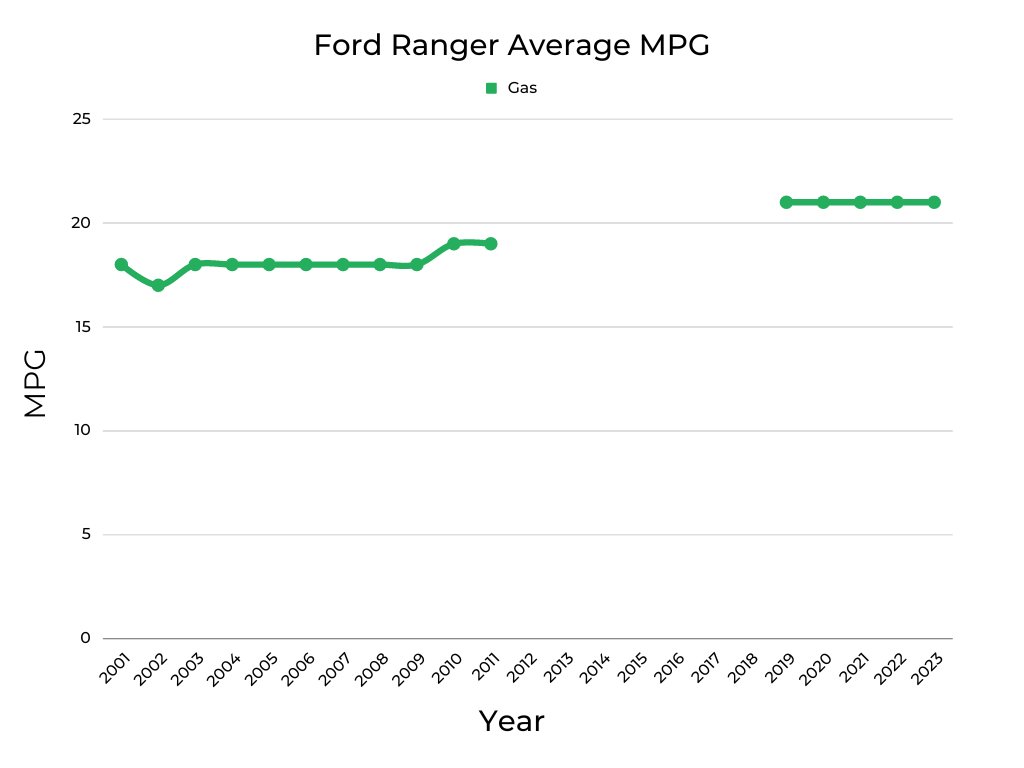
The Ford Ranger is a pickup, but it’s smaller than the normal full-size models. While it’s not going to get fuel economy numbers like a compact car, it doesn’t rate terribly either. It’s a good middle ground for someone that needs a truck but isn’t looking for a powerhouse that sucks down fuel.
Our graph reveals the average Ford Ranger fuel economy by model year. The green line shows all of the average ratings for gas-powered models. The Ranger hasn’t been offered in the United States as either a hybrid or diesel-powered truck.
While the fuel economy ratings aren’t far from one another, it’s clear that the newest lineup is going to save you the most at the pump.
Current Market Value of All Ford Ranger Years & Cost Per Year to Repair and Maintain Each
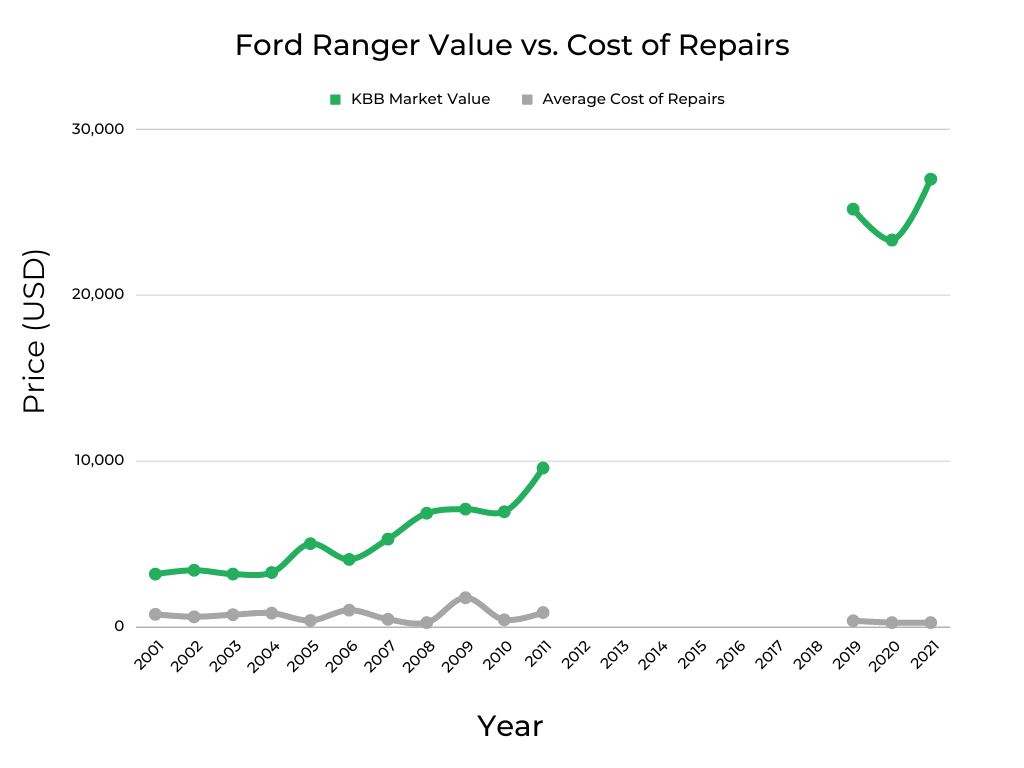
Once you look at the data from Ranger owners, it’s easier to determine what you might spend for repairs and maintenance. Whenever reliability is higher, there’s less chance of expensive repairs because you shouldn’t face as many mechanical issues. It’s also important to think about how much time the truck might spend in the shop for repairs because you will be without transportation during this time.
If you are ready to sell your Ford Ranger, these repair costs and the reliability score are also going to affect the average resale value. New trucks with few mechanical issues can sell for much higher than an older pickup riddled with issues. Yet, a newer truck doesn’t always mean that it’s a solid choice, which is why you must do your research.
If you plan to buy a Ford Ranger and are having trouble choosing between two models with comparable resale values and ratings, it could be better to pick the newer option. You should receive better technology, and you can plan on it lasting longer on the road with proper maintenance.
While our charted data shows the model years and value, the information is based on average mileage reportings from those taking our survey. Because KBB values rely heavily on mileage, it’s wise to run your own report before buying or selling a Ranger.
If you’d like to learn about this vehicle’s past depreciation rate & our projected depreciation rate based on that, check out: Ford Ranger | Depreciation Rate & Curve Graphed.
When shopping for a used Ford Ranger, it’s important to keep in mind that not all vehicles are cared for equally. To protect yourself from lemons, take along a FIXD Sensor on your test drive. FIXD connects to a free app on your smartphone to tell you more about the vehicle you’re checking out, including check engine lights and other hidden issues that the owner or dealership may be attempting to hide. Click here to learn more and get FIXD for only $19.99 (regular price $59)!
Important Features Timeline
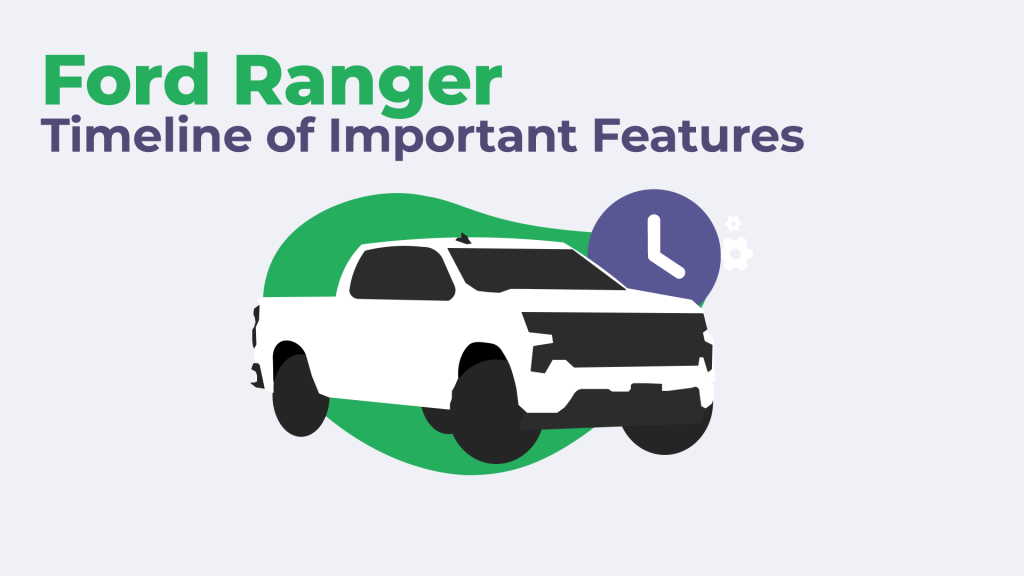
1996: Newly available passenger-side airbag, SuperCab models receive privacy glass
1997: Five-speed automatic transmission debuts
1998: Redesigned 3rd generation includes revised headlamps and a new grille, Regular Cab models receive longer wheelbase, four-door Ranger joins the lineup
1999: Standard 15” silver-styled wheels introduced, V6 models receive a Class III hitch receiver, Splash model discontinued
2000: 2WD trucks can be equipped with a Trailhead off-road suspension package, all Rangers includes new wheel designs
2001: Available 207-horsepower 4.0L V6 engine from the Explorer, ABS becomes standard equipment, new Edge trim offer monochromatic appearance
2002: FX4 model debuts with 31” BFGoodrich all-terrain tires, a limited-slip differential, tow hooks, Bilstein shocks, skid plates and 15” alloy wheels
2003: FX4 package becomes available as an Off Road or Level II addition, standard step bars added to XLT 4WD SuperCab and 4WD Edge models
2004: Interior improvements include revised seats, newly available leather upholstery and an optional leather-wrapped four-spoke steering wheel
2005: Flareside bed discontinued, minor package and wheel updates occurred
2006: Revised styling and exterior trim, FX4 includes rubber flooring, Edge renamed the Sport
2007: Standard equipment updated to include dual-stage front airbags, tire-pressure monitoring system, and an anti-theft system
2008: More aerodynamic front bumper added to the design, trim levels reduced
2009: 3.0L V6 engine discontinued
2010: Stability control, a Class III trailer hitch, air condtioning and side airbags become standard equipment, 7’ bed reserved for fleet customers
2011: Final model before discontinued
2019: Brand-new truck released for 4th generation. Apple CarPlay and Android Auto were introduced.
2020: New FX2 off-road package released
2021: Tremor Off-Road package released, dual-zone climate control and the SYNC 3 infotainment system become available in XL models
2022: Splash appearance package debuts
The Best Years of the Ford Ranger
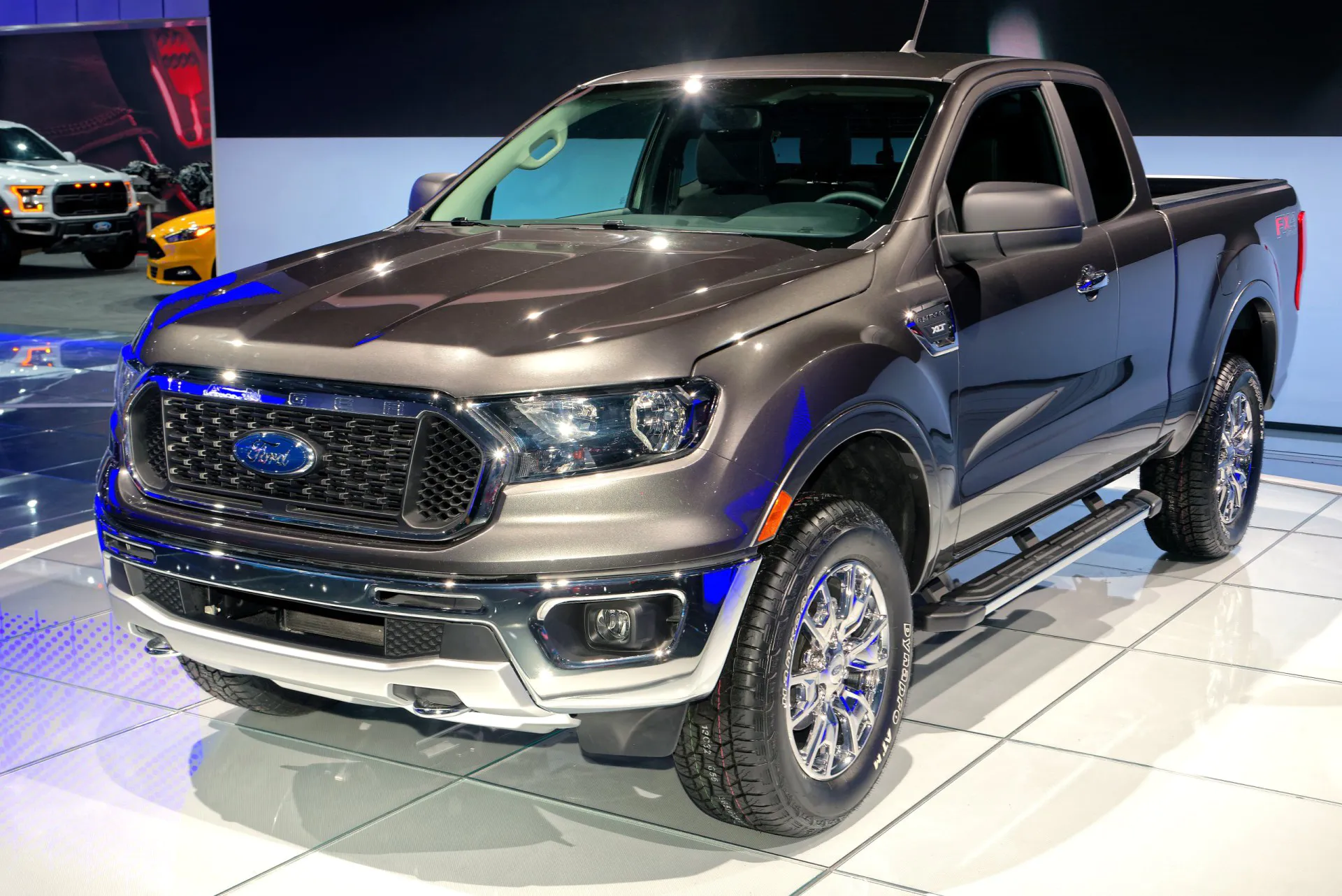
To pick the best trucks, we evaluated the FIXD Reliability score compared with all of the other data we collected. Our ratings are further established by the Owner Reliability score, fuel economy scores, safety ratings, and other factors. Through our evaluation, we also dig deeper into the top diagnostic trouble codes (DTCs) for each model, and we look at the number of recalls issued by the National Highway Traffic Safety Administration (NHTSA) so you understand everything good and bad about each model.
2019-2021 Ford Ranger
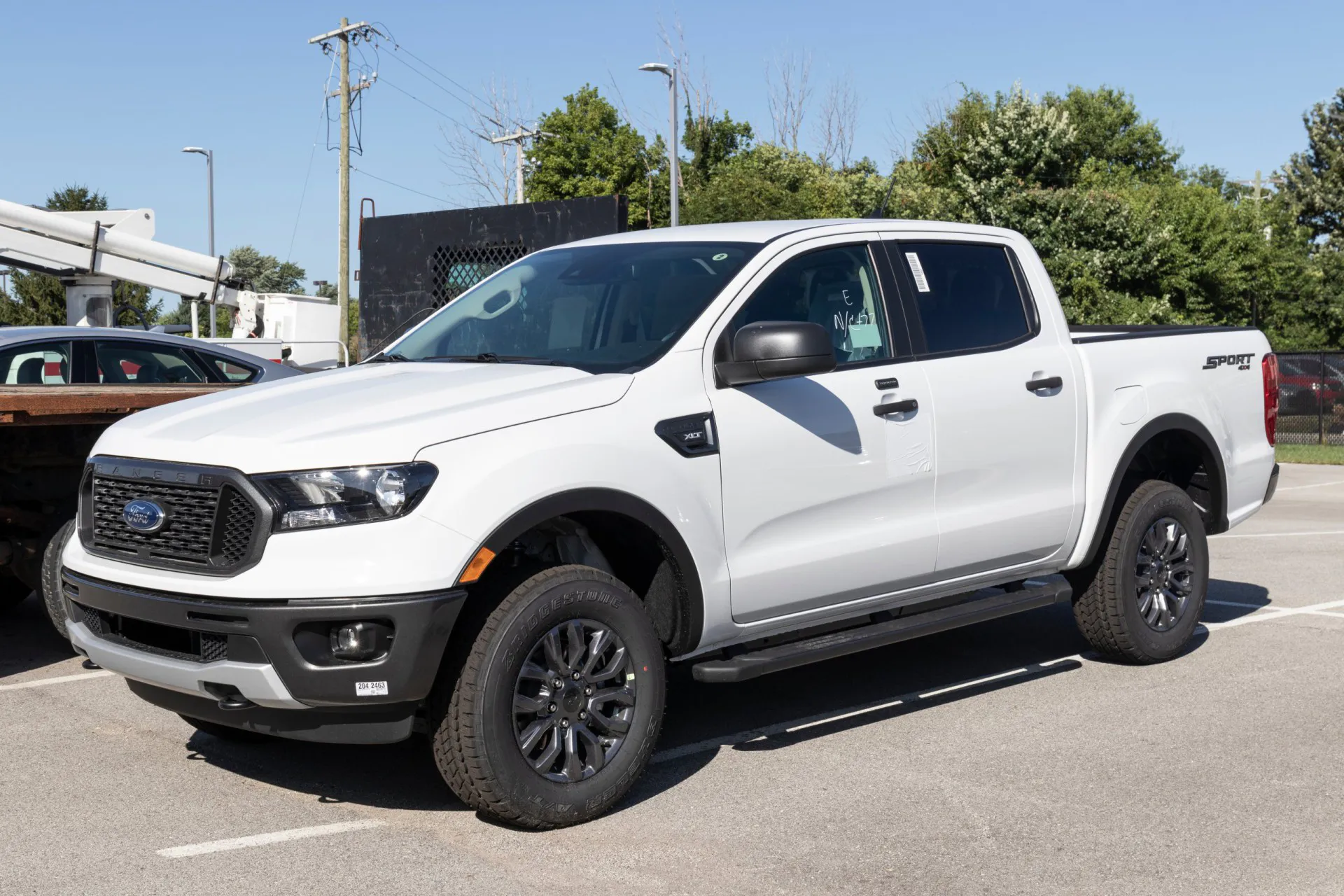
FIXD Reliability Score: 89-10/10
Owner Reliability Score: 98-10/10
KBB Value: $23,316-$26,989
Fuel Economy: 21 mpg
Annual Maintenance/Repair: $250-$361
Safety Rating: 3-4.4/5
The 2019 to 2021 Ford Ranger models are part of the 4th generation. These three models have some of the best rankings and will be the lowest cost to own.
The FIXD Reliability score on the 2019 Ford Ranger is 8 out of 10, while the 2020 and 2021 models earn a perfect 10 out of 10. Additionally, the Owners Reliability score of the 2019 Ranger is 9 out of 10, while the 2020 and 2021 trucks continue to get a 10 out of 10.
Sadly, the NHTSA crash testing score for the 2020 and 2021 Ford Ranger is only 3 (out of 5). Yet, the 2019 Ford Ranger earns 4.4 (out of 5).
The ownership costs of the 2020 and 2021 Ford Ranger are as low as you will find. Owners spend an average of just $250 a year, making this one of the most affordable trucks on the road. Even the 2019 Ford Ranger has an average cost of $361 a year. There’s the possibility that these lower estimates have to do with the Ford warranty, offering coverage of 3 years or 36,000 miles for the bumper-to-bumper protection or 5 years or 60,000 miles for the powertrain warranty. After the warranty is over, we may see the ownership costs rise slightly.
The biggest concern with the 2019 Ford Ranger is the Catalyst System Efficiency Below Threshold (P0420) code. While a new catalytic converter could cost you between $1,538 and $2,041, this truck may still be covered by the warranty when a repair needs to happen. The 2020 Ranger shows the possibility of the same problem, and also the Serial Communication Link Malfunction (P0600) DTC. This issue could be as small as a dead battery, or as large as a defective ECU. Additionally, the 2021 Ford Ranger deals with the Turbocharger Boost Sensor A Circuit Malfunction (P0235) code. If you aren’t sure how to troubleshoot or fix these problems, we highly recommend visiting a professional mechanic.
The 2019 Ford Ranger does have eight recalls, while the 2020 Ford Ranger shows five recalls and one investigation. Additionally, the 2021 Ford Ranger is subject to four recalls.
2008 Ford Ranger
FIXD Reliability Score: 1/10
Owner Reliability Score: 10/10
KBB Value: $6,846
Fuel Economy: 18 mpg
Annual Maintenance/Repair: $250
Safety Rating: 4.0/5
The 2008 Ford Ranger is one of the older models that have received good reviews, but our data only comes from one owner. It also doesn’t appear to have a high cost of ownership, but our data could be different if more 2008 Ranger owners had taken the survey.
The FIXD Reliability score on the 2008 Ford Ranger is only 1 out of 10, which is common with all of these trucks from the previous generation. However, the Owners Reliability score of the 2008 Ranger is 10 out of 10, so it doesn’t get any better than that.
The NHTSA crash testing score for the 2008 Ford Ranger is only 4 (out of 5). As with most Ranger models, this score is below average when compared with other vehicles in our database.
The ownership costs of the 2008 Ford Ranger couldn’t be more appealing. Owners spend an average of just $250 a year, so there’s very little to worry about if the truck has been maintained.
The three issues that we do see could be on the pricey side if they occur. The OBDII Monitor Testing Not Complete (P1000) DTC could indicate a simple issue with the battery, but the Battery Voltage Low (B1318) code usually indicates the need for a new alternator. This could cost you $501 to $912. Even worse is the possible Coolant Thermostat Temperature Below Regulating Temperature (P0128) code. If you need to install a new thermostat, you could spend between $477 and $512.
The 2008 Ford Ranger shows seven recalls. It also has an investigation related to valve cracking on the tires, which is something that has surely been fixed on most of these trucks by now.
2010-2011 Ford Ranger
FIXD Reliability Score: 1-2/10
Owner Reliability Score: 8/10
KBB Value: $6,933-$9,571
Fuel Economy: 19 mpg
Annual Maintenance/Repair: $417-$857
Safety Rating: 3-4.25/5
The 2010 and 2011 Ford Ranger models make up the final two before the truck took a hiatus. These continue to receive great reviews from owners and don’t suffer from any costly mechanical issues.
The FIXD Reliability score on the 2010 Ford Ranger is only 1 out of 10, while the 2011 Ranger earns a 2 out of 10. However, the Owners Reliability score of the both Ranger models is 8 out of 10, which is great for these being older.
The NHTSA crash testing score for the 2011 Ford Ranger is only 3 (out of 5). The 2010 Ford Ranger earned much better, with a rating of 4.25 (out of 5).
Ownership costs are still reasonable with these two models. The 2010 is rated at $417 a year, while the 2011 estimates show $857. Yet, with both models, we don’t have a record of major mechanical repairs occurring that would cost an excessive amount at the shop.
With the 2010 Ford Ranger, we see the exact three issues with the 2008 truck. With the OBDII Monitor Testing Not Complete (P1000) DTC and the Battery Voltage Low (B1318) code, you may need to replace the battery or alternator. A new alternator averages $501 to $912. There’s also the Coolant Thermostat Temperature Below Regulating Temperature (P0128) code. If you need to install a new thermostat, you could spend between $477 and $512. As far as the 2011 Ranger, it also shows a higher chance of the OBDII Monitor Testing Not Complete (P1000) DTC. It also suffers from the Random, Multiple Misfire Detected (P0300) and Cylinder 3 Misfire (P0303) codes. The truck probably needs spark plugs, costing $58 to $167.
The 2010 Ford Ranger shows ten recalls. In comparison, the 2011 Ford Ranger has six recalls.
2003 Ford Ranger
FIXD Reliability Score: 1/10
Owner Reliability Score: 8/10
KBB Value: $3,177
Fuel Economy: 18 mpg
Annual Maintenance/Repair: $727
Safety Rating: 3.4/5
The 2003 Ford Ranger models earn good ownership ratings. Additionally, the likelihood of a major mechanical repair to the engine or transmission is low.
The FIXD Reliability score on the 2003 Ford Ranger is only 1 out of 10. However, the Owners Reliability score of this Ranger is 8 out of 10, which is impressive.
The NHTSA crash testing score for the 2003 Ford Ranger is only 3.4 (out of 5). We’ve shown that none of the Rangers earn superior ratings, so this is nothing unusual.
Ownership costs are still reasonable with this older truck. While it’s rated at $727 a year, it could still suffer from some costly AC/heat or fuel system troubles.
Looking at the three most popular codes with the 2003 Ford Ranger, we see the Misfire Detected on Startup (P0316) DTC. This seems to go hand-in-hand with the Random, Multiple Misfire Detected (P0300) and the Cylinder 5 Misfire (P0305) codes. With any of these, you may need spark plugs, with an estimated cost between $58 and $167.
The 2003 Ford Ranger does show five recalls. It also has one investigation related to inoperable brake lights. Considering many of the recalls had to do with the exterior lighting, this problem should be repaired before you buy this used truck.
The Worst Years of the Ford Ranger
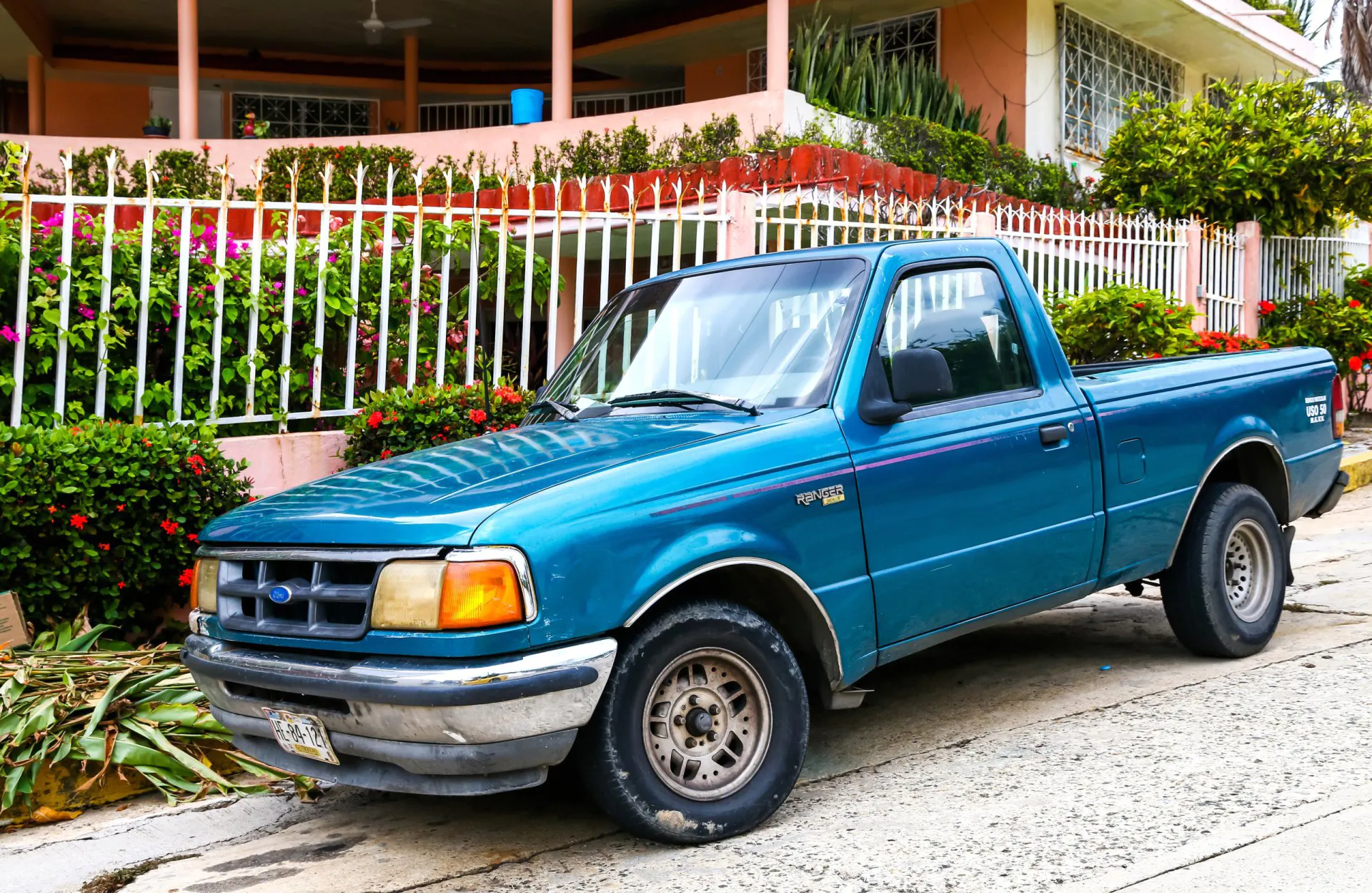
2009 Ford Ranger
FIXD Reliability Score: 1/10
Owner Reliability Score: 4/10
KBB Value: $7,094
Fuel Economy: 18 mpg
Annual Maintenance/Repair: $1,750
Safety Rating: 4.0/5
Not only does the 2009 Ford Ranger receive terrible ratings, but it also has the highest cost of ownership from all of the truck years. This is another model year that we only have 1 survey respondent for. Therefore, the ratings could be very different if more people were to answer.
The FIXD Reliability score on the 2009 Ford Ranger is only 1 out of 10. Additionally, the Owners Reliability score of this Ranger is 4 out of 10, which is the lowest given to any of the models we rated.
The NHTSA crash testing score for the 2009 Ford Ranger is only 4.0 (out of 5). This rating continues to be below average.
Ownership costs are where this truck fails miserably. It’s rated at $1,750 a year. Plus, it suffers from a higher chance of engine or brake repairs.
We also see some common DTCs with these Ranger models. The most common is the OBDII Monitor Testing Not Complete (P1000) DTC, which may require a new battery. There’s also a chance of the System Gross Leak Evaporative System Malfunction (P0455) code. Finally, we see instances of the Battery Voltage Low (B1318) code, which usually indicates the need for a new alternator. You may spend $501 to $912 for this fix.
As far as recalls, the 2009 Ford Ranger doesn’t seem to do any better than the other models. The NHTSA shows nine recalls for this truck.
2004-2006 Ford Ranger
FIXD Reliability Score: 1-2/10
Owner Reliability Score: 6-10/10
KBB Value: $3,268-$5,010
Fuel Economy: 18 mpg
Annual Maintenance/Repair: $375-$1,000
Safety Rating: 3.6-4.0/5
The biggest downfall for the 2004 to 2006 Ford Rangers is the amount of expensive repairs that occur. Even though owners tend to like it, there seems to be unwarranted loyalty to the models.
The FIXD Reliability score on the 2004 and 2006 Ford Ranger is only 2 out of 10, while the 2005 Ford Ranger gets a 1 out of 10. Additionally, the Owners Reliability score of the 2004 Ranger is 6 out of 10, the 2006 Ranger earns 7 out of 10, and the 2005 gets a 10 out of 10.
The NHTSA crash testing score for the 2005 and 2006 Ford Ranger is only 3.6 (out of 5). The 2004 Ranger does a little better, with a ranking of 4.0 (out of 5).
The big concern with these three models is ownership costs. The 2004 truck averages $821 a year, while the 2006 Ranger is rated at $1,000 a year. While the 2005 Ford Ranger only shows $375 a year, there’s something not right with this estimate. All three trucks have a higher chance of expensive engine and brake repairs. Plus, the 2004 and 2005 Ranger also rank higher for transmission problems, while the 2004 and 2006 models show a higher chance of expensive AC/heat and fuel system repairs.
Both the 2004 and 2006 Ford Ranger suffer from the Random, Multiple Misfire Detected (P0300), and all three trucks show the Misfire Detected on Startup (P0316) DTC. You may need spark plugs, with an estimated cost between $58 and $167. What’s even more alarming is the Catalyst System Efficiency Below Threshold (P0420) code with the 2006 Ford Ranger. If you need to install a new catalytic converter, costing between $1,538 and $2,041, your truck may not be worth repairing.
The 2004 Ford Ranger has 12 recalls and three investigations, while the 2005 Ford Ranger shows 11 recalls and three investigations. Furthermore, the 2006 Ford Ranger also has 12 recalls.
2001-2002 Ford Ranger
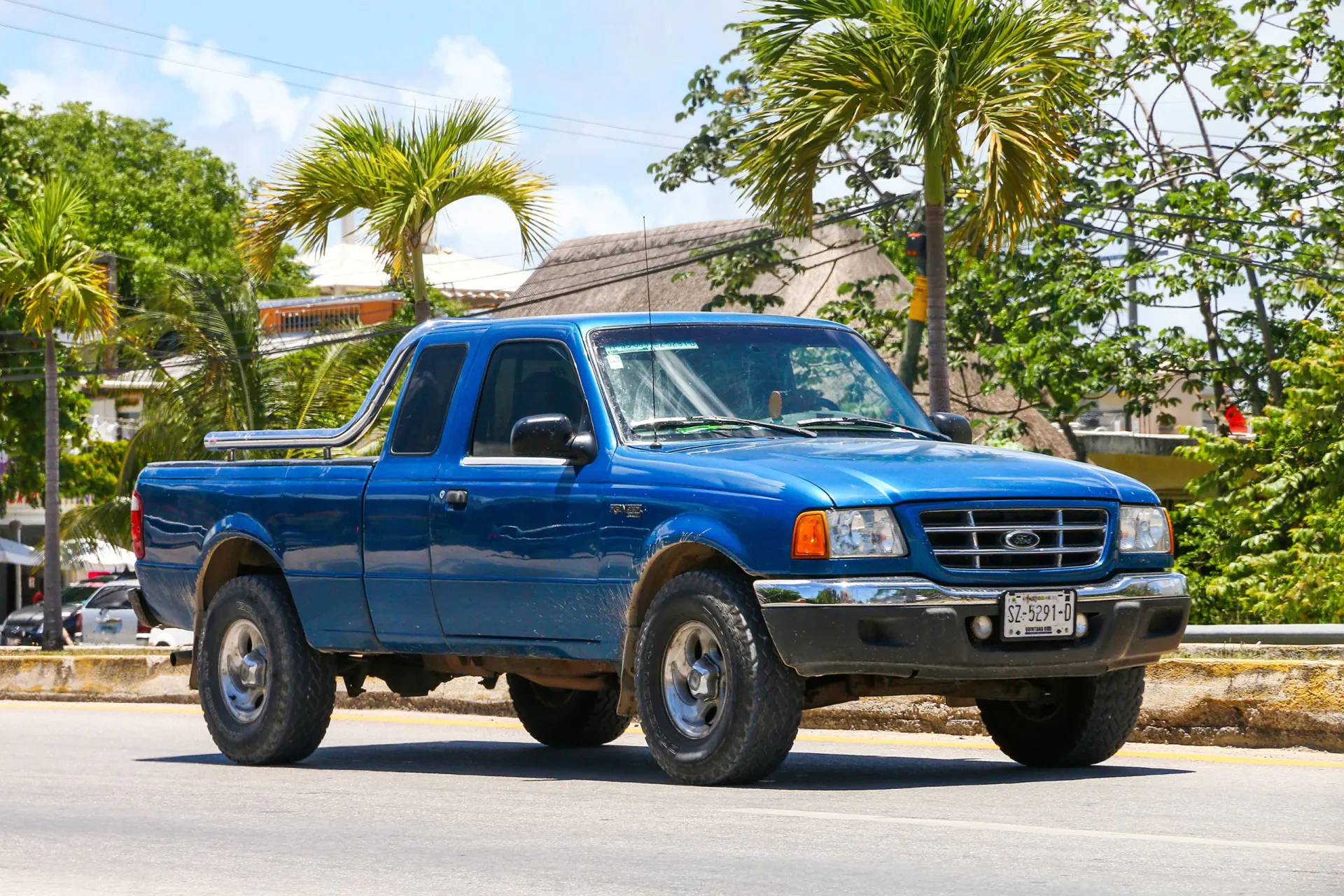
FIXD Reliability Score: 1/10
Owner Reliability Score: 5-8/10
KBB Value: $3,174-$3,407
Fuel Economy: 17-18 mpg
Annual Maintenance/Repair: $600-$750
Safety Rating: 3.6-5/5
The oldest models we are looking at also seem to suffer from some pretty big problems. Additionally, the reliability ratings aren’t favorable.
The FIXD Reliability score on the 2001 and 2002 Ford Ranger is only 1 out of 10. Additionally, the Owners Reliability score of the 2001 Ranger is 5 out of 10, while the 2002 Ford Ranger earns 8 out of 10.
The NHTSA crash testing score for the 2001 Ford Ranger is 5 (out of 5), which is the only model to score over the average. The 2002 Ranger does worse with a ranking of 3.6 (out of 5).
Ownership costs are also on the higher side with both models. The 2002 averages a lower cost than the 2001, but both suffer from expensive transmission, brake, and fuel system repairs. The 2001 Ranger may also have some AC/heat problems, while the 2002 model shows a higher likelihood of engine issues.
The two biggest problems with the 2001 Ford Ranger are the Exhaust Gas Recirculation (EGR) Flow Insufficient Detected (P0401) and the System Too Rich (P0175) DTC. With the second problem, you may be able to replace the Mass Air Flow (MAF) sensor for $172 to $309. The 2002 Ford Ranger further shows the Cylinder 3 Misfire (P0303) and the System Too Lean Bank 1 (P0171) code. If you aren’t sure how to fix or diagnose these issues, it may be best to take the truck to a Ford mechanic.
The 2001 Ford Ranger has nine recalls and two investigations. In comparison, the 2002 Ford Ranger has seven recalls.
2007 Ford Ranger
FIXD Reliability Score: 1/10
Owner Reliability Score: 8/10
KBB Value: $5,284
Fuel Economy: 18 mpg
Annual Maintenance/Repair: $450
Safety Rating: 3.8/5
Our final model also has a higher chance of expensive repairs. Yet, the average annual cost and ownership ratings seem to tell a different story.
The FIXD Reliability score on the 2007 Ford Ranger is only 1 out of 10. On the flip side, the Owners Reliability score of the 2007 Ranger is 8 out of 10.
The NHTSA crash testing score for the 2007 Ford Ranger is 3.8 (out of 5). This continues to fall below average.
Ownership costs appear to be low, with an average of $450 a year. However, there seems to be a higher instance of engine, transmission, brake, and fuel system repairs.
With the 2007 Ford Ranger, there are three common codes. First, the OBDII Monitor Testing Not Complete (P1000) DTC could indicate a simple issue with the battery. There’s also a chance of the Battery Voltage Low (B1318) code, which usually indicates the need for a new alternator. This could cost you $501 to $912. Finally, there’s a chance for the Misfire Detected on Startup (P0316) DTC. Hopefully, this repair only requires some spark plugs.
The 2007 Ford Ranger shows six recalls. The one investigation shows issues with tire valve cracking, which is a repair that was likely performed before you get your hands on this used truck.
FAQs
What years of the Ford Ranger have engine and/or transmission problems?
Based on our data, the 2002, 2004-2007, and 2009 Ford Ranger models are more likely to suffer from expensive engine repairs. There’s also a higher chance of transmission repairs with the 2001-2002, 2004-2005, 2007, and 2021.
What is considered high mileage for a Ford Ranger?
Considering how hard people can be on trucks, maintenance is going to be the most important factor in keeping the Ford Ranger on the road. With proper care and maintenance, you could see trucks with 175,000 miles or more.
Based on our data, a high-mileage Ford Ranger could be considered anything over 145,000 miles.
Older Ford Ranger models (2001-2011) show an average mileage range between 100,000 and 196,000. The 2004 Ranger has one of the highest mileages in our surveys, but there are a couple that get more than 180,000 miles. If you want a Ranger with an excessive amount of mileage, the resale value is going to be lower, but there isn’t going to be a lot of wiggle room to make repairs without exceeding this value.
What other vehicles should I consider?
If you want to stick with Ford and you desire a truck, you can also consider the Ford Maverick, Ford F-150, or Ford Super Duty lineup. However, some Ford SUVs are also worth considering, especially the Ford Explorer, Ford Escape, or Edge.
Outside of the Ford brand, comparable trucks would include the GMC Canyon, Honda Ridgeline, Chevy Colorado, Hyundai Santa Cruz, Jeep Gladiator, Nissan Frontier, or Toyota Tacoma.
What owners of the Ford Ranger like to use their car for:
Percent based x/5-star: 0-10% = 1, 11-20% = 2, 21-30% = 3, 31-40% = 4, 41%+ = 5
| Frequent Use Categories: | How Useful? (Out of 5 Stars) |
| Family Vehicle | *** |
| Lots of Driving (travel/long commute) | **** |
| Hauling/Towing | *** |
| Office on Wheels | * |
| Sport/Fast Driving | * |
| Luxurious Driving | * |
| Outdoor/Off-Road | ** |
A Note About Data and Information Sources
This article has many details about Ford Ranger reliability; here’s what we used for our assumptions and recommendations.
- FIXD Reliability Score & Data: Engine reliability information is captured via the FIXD App.
The FIXD Reliability Score is calculated using the number of DTCs per year, weighted by mileage. This is then turned into a scale of 1-10 for easy graphing.
This is an objective score.
- Owner Reliability Score & Data: This data is the result of surveying Ford Ranger owners who use FIXD.
The Owner Reliability Score comes straight from owners of the Ford Ranger.
This is a subjective score.
To determine the Owner Reliability Score we ask each car owner:
How reliable would you say your Ford Ranger is?
a. Just point A to point B driving
b. A Daily Commuter
c. Good for a 100 mile road trip
d. Good for a 500 mile road trip
e. I could take a cross-country road trip, no problem
From here we translate their answers into the Owner Reliability Score:
a. = 2
b. = 4
c. = 6
d. = 8
e. = 10
Keep in mind, owners may think their car is more or less reliable than it actually is.
One potential problem is that people often buy the same make or model they are used to when they go car shopping, just a newer year.
Ford, for instance, has a number of consumer loyalty awards for the Ford F-Series, Ford Mustang, and Ford Expedition.
Car owners may be so loyal to the make or model they currently own that they would have trouble accurately comparing their cars’ reliability to others.
It’s for this reason that we ask car owners a question that is relative to mileage rather than relative to other cars.
Still, be mindful of the accuracy of these Owner Reliability Scores, people’s perceptions and unconscious blindspots can skew data.
We suggest looking at both the FIXD Reliability Score and the Owner Reliability Score for this reason.
- KBB Value: Average private-seller valuations as supplied by Kelley Blue Book (KBB), based on a Ford Ranger with typical mileage for that respective model year.
- Fuel Economy: Mileage-per-gallon estimates according to the EPA MPG on Fueleconomy.gov
- Annual Maintenance/Repair: Upkeep expenses as reported by surveyed Ford Ranger owners
- Safety Rating: Crash test data collected and reported by NHTSA. We average all ratings for each year to come up with a simplified, average safety score. This makes it easier to look at on a graph.
References
- Ford Ranger, wikipedia.org. Retrieved June 29, 2023, from https://en.wikipedia.org/wiki/Ford_Ranger
- Ford Ranger sales figures, goodcarbadcar.net. Retrieved June 29, 2023, from https://www.goodcarbadcar.net/ford-ranger-sales-figures/
- Ford Ranger review, edmunds.com. Retrieved June 30, 2023, from https://www.edmunds.com/ford/ranger/
- Ford warranty information, ford.com. Retrieved June 30, 2023, from https://www.ford.com/support/warranty/

Brian Jones owns a used car dealership outside of Dallas, Texas. He has also worked for decades as an ASE Certified Master Technician for a variety of new car dealerships. Now he spends his time consulting dealerships and writing for some renowned publications, such as Motor1 (https://www.motor1.com/info/team/brian-jones/). When he’s not working, he’s tinkering around with pickup trucks and traveling with his family.

